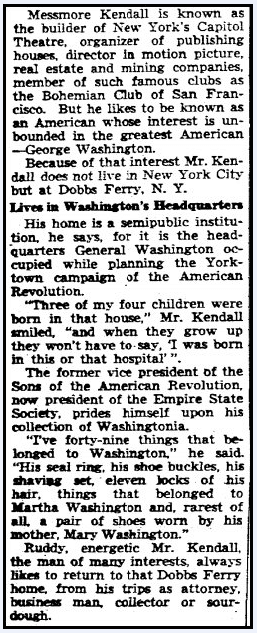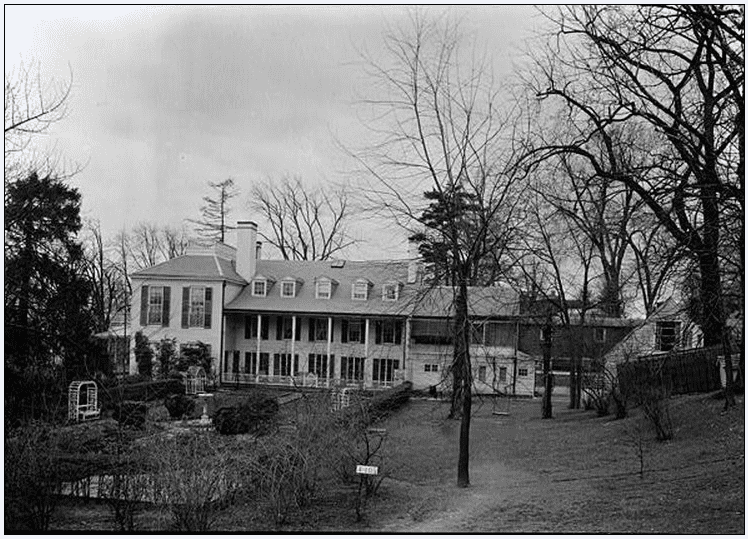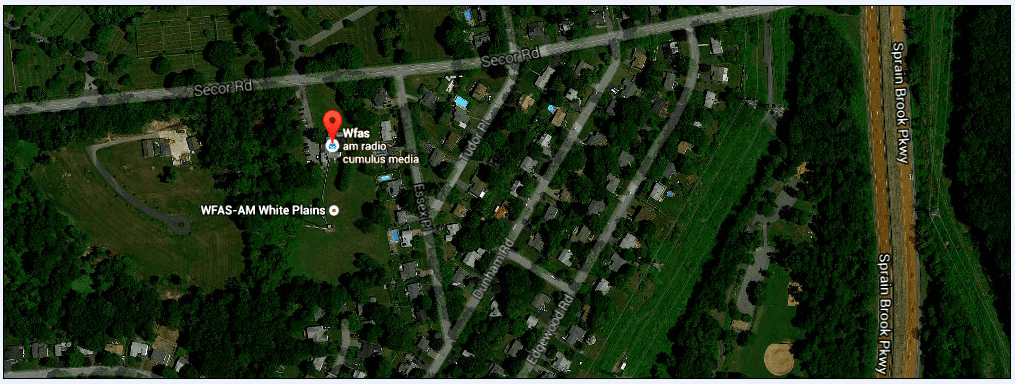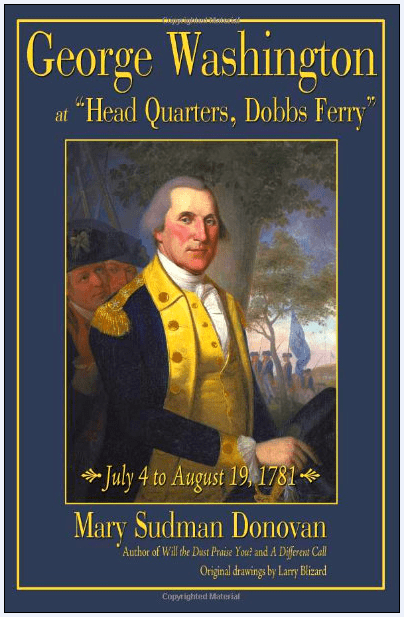One of my family traditions tells us that George Washington made his headquarters, from 4 July to 19 August 1781, at the home of my 5th Great-Grandfather, Joseph Appleby (1732-1792) in Greenburgh, New York, in the Dobbs Ferry section of town, during the American Revolutionary War.
Joseph Appleby served as a 2nd lieutenant in the First Regiment of Westchester County, New York Militia.
I found this interesting 1935 newspaper article reporting that in 1935 Messmore Kendall (1872-1959) was living in a house in Dobbs Ferry—and erroneously stated that was the house that George Washington used as his headquarters in 1781, not the home of my ancestor Joseph Appleby.

Kendall took great pride in his home’s supposed connection to George Washington and its key role in the American Revolution.
It was an impressive home.

Kendall served as the national vice-president of the Sons of the American Revolution and as the president of the Empire State Chapter of the NSSAR. In 1894 he had a monument erected in front of his house commemorating its place in history.
Kendall collected dozens of historic heirlooms previously owned by George Washington and had them on display at his home.
It was a nice story—but it was not true.
A Historic American Building Survey Report issued 29 March 1934, written by Thomas Hotchkiss (Re: Messmore Kendall Residence), stated that:
The 1894 monument…incorrectly alleges that Washington and Rochambeau met at this house [Philipse Manor] to plan the Yorktown Campaign in 1781. As explained authoritatively…these commanders of the allied armies occupied the Appleby and Odell houses respectively on country roads back in the hills, and conveniently held their conference there surrounded by their troops.
It turns out that Kendall lived at the Philipse Manor built by Frederick Philipse. His great-grandson, Frederick Philipse, was a Tory and “his lands and houses” were seized and sold. The manor house was purchased by Philip Livingston.
See: Historic American Building Survey, Report HABS No. 4-105
http://www.historicmapworks.com/Buildings/index.php?state=NY&city=Dobbs%20Ferry&id=25738
Genealogy Tip: Historical claims can be wrong—even when they make it into print in a newspaper, such as Kendall’s claim about his home being a former headquarters of George Washington.
The Appleby home which George Washington did use as his headquarters stood on what is now Secor Road in Dobbs Ferry, New York.

There is a video interview with Mary Sudman Donovan, Ph.D., Village Historian of Dobbs Ferry, New York. See the interview on YouTube here:
Donovan is the author of the book George Washington at “Headquarters, Dobbs Ferry” July 4 to August 19, 1781. Bloomington, IN: iUniverse, 2009.
Find and document your family’s stories in GenealogyBank’s Historical Newspaper Archives.
Carefully review the facts you are gathering. Evaluate them and seek out corroborating sources.
Make sure that the stories about your ancestors are accurate, preserved and passed down in the family.
Related Articles:
- How to Spot and Avoid 9 Common Genealogy Mistakes & Errors
- 1799 Newspaper Announcing Death of George Washington: Free Download!
- Hammet Achmet: Washington’s Waiter & Revolutionary War Patriot
[bottom_post_ad]


Dear Mr. Kemp,
Thank you for your interesting blog about your relationship to Joseph Appleby and the historically inaccurate news story. The historically inaccurate plaque from 1894 was only corrected around 2000.
I think that your article has a confusing piece of information that I would like to clarify. You write:
It turns out that Kendall lived at the Philipse Manor built by Frederick Philipse. His great-grandson, Frederick Philipse, was a Tory and “his lands and houses” were seized and sold. The manor house was purchased by Philip Livingston.
The manor house of Frederick Philipse was Philips Manor Hall in Yonkers, now a historic site owned by New York State. The house in your photo that Messmore Kendall owned in Dobbs Ferry is referred to as the Hyatt-Livingston House. Hyatt was the tenant farmer at the time of the Revolution. Livingston bought the property when it was auctioned at the end of the war. The large grand part of the house in your photo was built by Livingston. One or two small structures that connected to it existed during the Revolution.
The large land tract that Frederick Philipse owned and leased to tenant farmers was generally referred to as Philipsburgh, but some refer to it as you did as Philips Manor.
Another small point–Your article states:
at the home of my 5th Great-Grandfather, Joseph Appleby (1732-1792) in Greenburgh, New York, in the Dobbs Ferry section of town, during the American Revolutionary War.
The Appleby House is not in Dobbs Ferry. The site is in neighboring Hartsdale near the Ardsley border.
It is very exciting to find a descendant of Joseph Appleby. If you know of other existing resources about the family, particularly from the Revolutionary period, I would be happy to have that reference.
P.S. My husband, Dr. Richard Borkow, produced the video that you included in your page. It’s so nice to see the video used to bring information about the Revolutionary period to the public.
Best wishes,
Linda Borkow
Trustee, Dobbs Ferry Historical Society
Dear Mr. Kemp,
I just happened upon this blog post as I was researching my 6th great-grandfather, Joseph Appleby. Appleby and Van Wert, are parents to my fifth great-grandmother, Wyntje Appleby. Wyntje Appleby married Isaac Sedore, and it’s through Isaac and his Service during the American Revolution, that I became a Daughter of the American Revolution (Upper Canada Chapter). I’ve been researching their migration north to Canada following the War and wondered if you may have any information on why that might have taken place. I surmised there was perhaps a shortage of land, but wondered if there may have been other exigent circumstances that caused them to move North?
Warmest regards,
Cherie (your very distant cousin)
The Mesmore Kendall house was never Phillipsbugh Manor. That house was in today’s Sleepy Hollow and another in Yonkers. The Kendall house was the 4-room Hyatt farmhouse, one of many humble farms leased from Phillips. It was purchased from the Trustees in Forfeiture by a Mr. Livingston and expanded into the grand mansion you picture after the Revolution. The Appleby house was NOT in today’s village of Dobbs Ferry. George Washington used the name “Dobbs Ferry” to refer to everything from Hartsdale to Palisades NY, including Ardsley. His headquarters in the Appleby house was on the border between present-day Ardsley and Hartsdale.
In 1894, the unveiling of a commemorative monument at 152 Broadway heralded a significant chapter in American history, predating Messmore Kendall’s ownership in 1917. Kendall, recognizing the historical resonance of the accompanying house, embarked on its meticulous restoration, evident in national archive photos. This site, once a hallowed ground for Revolutionary War ceremonies, holds an indelible mark on the monument, underscoring its cultural significance.
The dedication festivities in Dobbs Ferry were a grand affair, with the ancient village teeming with visitors. Men-of-war saluted on the river, and military and civic organizations paraded ashore to honor the Washington-Rochambeau Monument. Notable figures, including the Vice President of the United States, members of Congress, and the Senate, gathered at the historic Livingston house. Despite historical inaccuracies on the monument, the enduring enthusiasm and belief in the nation over a century since its founding remain noteworthy.
Kendall’s commitment to the American Revolution and George Washington manifested through the Sons of the American Revolution and philanthropy. His fervor extended to Washington memorabilia, culminating in Washington Hall at the 1939 World’s Fair. Fellow collectors echoed his legacy, donating invaluable collections to the New York Park service. Emphasizing the patriotic duty to honor such sites crucial to America’s establishment, the dedication ceremonies at Dobbs Ferry, a century post-revolution, hold enduring significance. The monument’s historical discrepancies, while acknowledged, pale compared to Kendall’s commitment to revolutionary ideals, making Dobbs Ferry and its surrounding areas invaluable in preserving the sacrifices of the colonial and French armies.